If you want to work in a professional kitchen, you'll probably notice that most, if not all, kitchen staff wear white. If you’ve ever wondered why Chefs wear white - you've come to the right place.
In this article, we’ll discuss why the traditional Chef's uniform is white and the symbolism behind the white uniform and its practical benefits. Then, we'll compare Chef uniforms used in different cultures and highlight their differences.
Introduction to the Chef's Uniform
The iconic white chef's uniform, known as "chef whites," has a storied history dating back to the 19th century. It was the legendary French chef Marie-Antoine Carême who pioneered standardization. Carême reinvented the chef's uniform with both aesthetics and practicality in mind.
His vision of a clean, white jacket showcased professionalism and cleanliness, contrasting sharply with the grimy aprons common in kitchens during that era. Chef Carême’s contemporary, Auguste Escoffier, later helped to popularize this uniform, solidifying its place in culinary tradition.
The uniform consisted of a tall toque hat, a double-breasted jacket, an apron and loose pants. Except for the pants, which could be black or have a black-and-white houndstooth pattern, all of the garments were white.
Historical Evolution of the Chef's Uniform
The Chef's uniform has undergone significant transformations since its inception. In the mid-19th century, French chef Marie-Antoine Carême introduced the white uniform to symbolize cleanliness and professionalism in the culinary arts. Later, Georges Auguste Escoffier popularized the uniform in London, solidifying its place in Western culinary tradition.
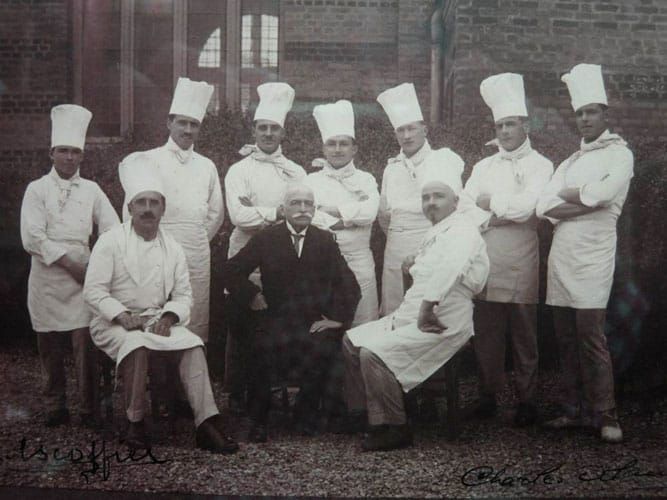
[This is Georges Auguste Escoffier, seated at the center, in a rare historical photograph from Old Cooks Books]
Chef Hat (Toque) and Its Role in the Uniform
The Chef's hat, known as the toque, is an essential component of the traditional uniform, symbolizing the wearer’s rank and expertise in the kitchen. The height and number of pleats on the toque historically indicated a Chef’s level of experience, with some toques featuring up to 100 pleats to represent the number of ways a chef could prepare an egg.
Beyond symbolism, the hat serves practical purposes by keeping hair out of food and helping to absorb sweat during intense kitchen activities. Today, while some kitchens favor more practical skull caps or bandanas, the classic toque remains a powerful emblem of culinary excellence.
The Symbolism Behind Wearing White in the Kitchen
Wearing white in a kitchen doesn't make a lot of sense, right? After all, Chefs work with sauces and oils that can easily stain white uniforms. At first glance, it doesn't seem very practical.
Well, believe it or not, Chefs wear white not only for practical, but symbolic reasons as well. First, white uniforms are said to project an authoritative presence. Second, white is seen as pristine and clean.
These are two qualities that everyone wants to see in the person preparing your food. Although white colors are still used in most traditional restaurants, black uniforms are becoming more popular every year.
Practical Benefits of Wearing White
Besides the aforementioned symbolic reasons for the white Chef's uniform, there are also practical ones. Chef uniforms, in general, are designed to be practical and to stand up to the demanding kitchen environment.
The white Chef's jacket, for example, is designed to protect Chefs from the intense heat of kitchen equipment like ovens and stoves. After all, white is known to deflect heat instead of absorbing it. The Chef's hat is another practical Chef garment. Also known as toques, these hats keep the Chef's hair and sweat away from food. The toques feature pleats that have pockets of air to dissipate heat.
The thick cotton fabric of a white chef jacket provides a layer of insulation against the intense heat of stoves and ovens, protecting chefs from burns. The double-breasted design offers an extra layer of protection against splatters and can be easily reversed to hide stains if a Chef needs a quick change. The knotted buttons are not only a distinctive design feature but also practical, as they can withstand frequent washing and contact with hot items.
Symbolism and Psychological Impact of Chef Whites
The color white carries strong psychological connotations of cleanliness, precision, and attention to detail, all of which are critical attributes in a professional kitchen. By wearing white, Chefs project an image of control and mastery, which can instill confidence in both kitchen staff and diners.
A clean white uniform serves as a constant reminder of the importance of hygiene and high standards, reinforcing the discipline required to excel in culinary arts. Additionally, white uniforms can foster a sense of unity and pride among kitchen staff, contributing to a more cohesive and efficient team environment.
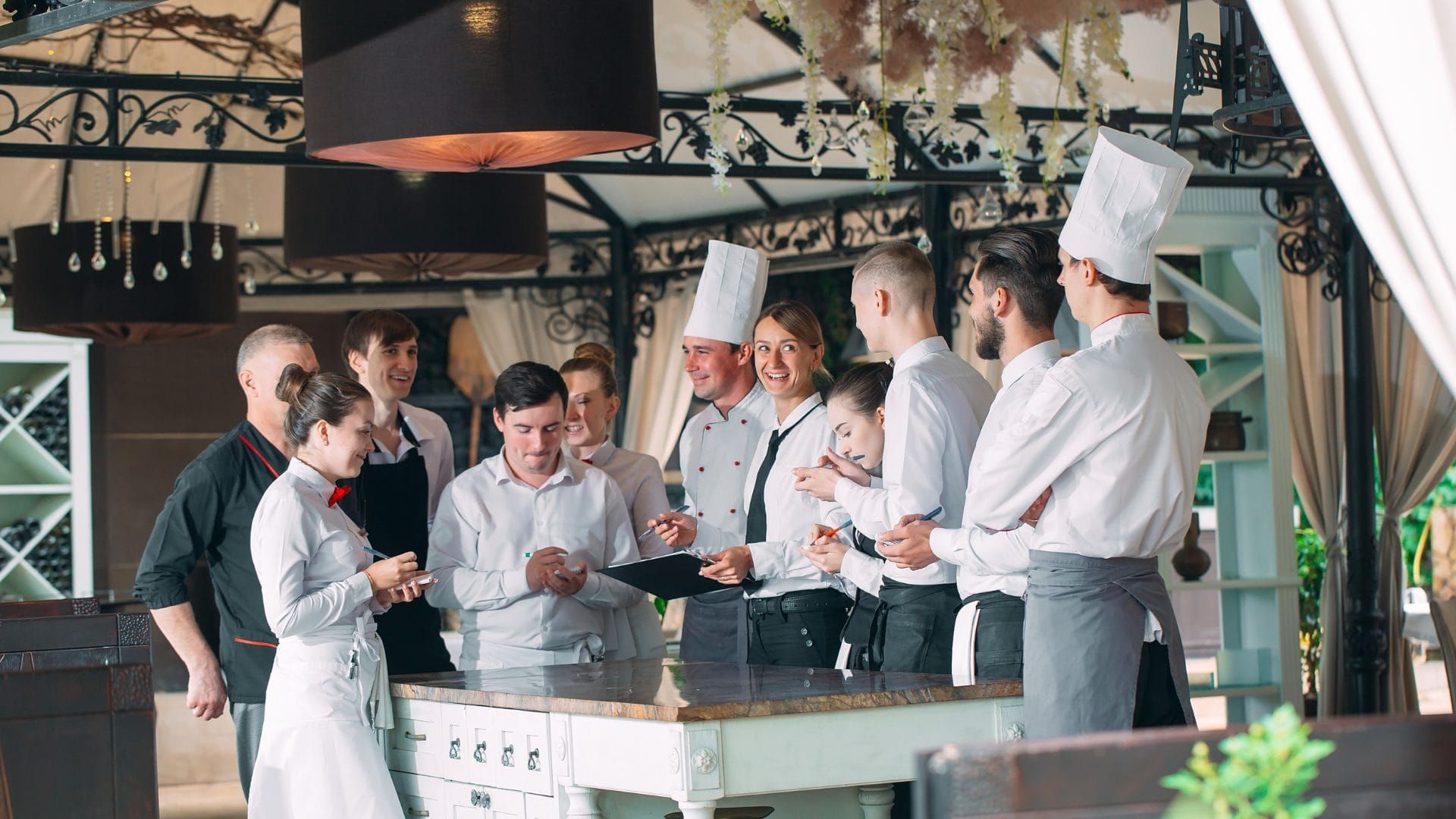
Comparing Chef Uniforms Across Cultures
The Chef's uniform, as seen today in most of the Western world, originated in France. Marie-Antoine Carême designed the uniform with the simple goal of projecting an image of professionalism and cleanliness. The white toque also originates from France. The height of the toque is used to represent the Chef's level of knowledge and expertise. The taller the toque, the higher the Chef's rank in the kitchen.
However, there are many different types of Chef uniforms in the culinary world. For example, Japanese Chef uniforms are simpler, showing a deep appreciation of Japan's rich cultural heritage. Part of their uniform is what’s known as "happi" — a short kimono-style jacket. The jacket typically has carefully placed symbols that can represent the Chef's rank, the establishment's emblem or some aspect of their culinary philosophy.
More recently, however, the line separating different uniforms has become thinner. Globalization of the culinary industry has created a fusion of techniques, flavors, as well as uniforms.
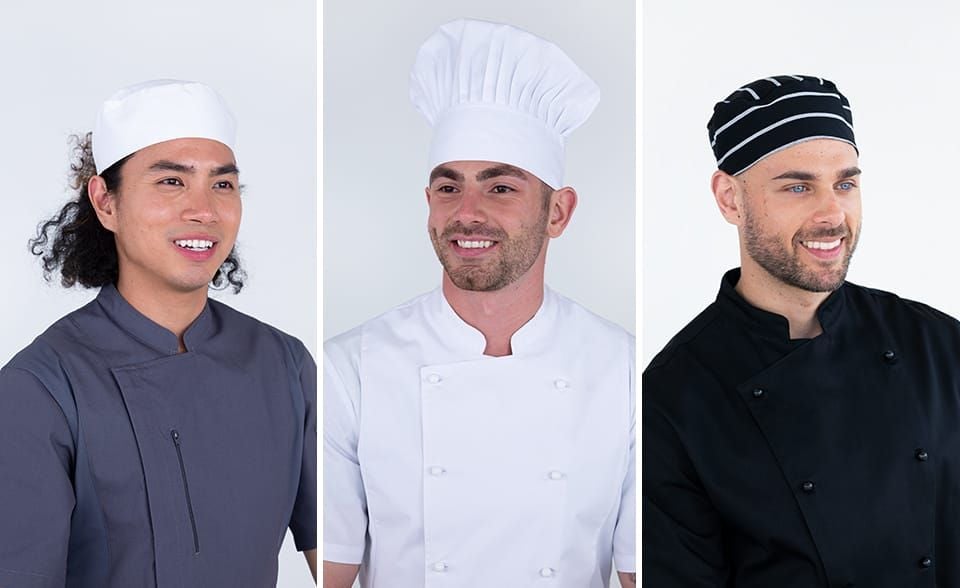
[Source: Aussie Chef]
Color Significance in Chef Uniforms Across Cultures
While white remains the traditional color for chef uniforms in many Western kitchens, symbolizing cleanliness and professionalism, other cultures and modern culinary environments have adopted different colors to signify various roles and ranks.
For instance, black chef jackets are often worn by Head Chefs or senior kitchen staff, representing authority and experience. In some kitchens, different colors are used to differentiate various roles or departments; for example, blue might be worn by Sous Chefs, green by Salad Chefs, and red by Grill Chefs. This color-coding system aids in quickly identifying the specific tasks each Chef is responsible for.
The Timeless Power of the White Chef’s Uniform
The iconic white Chef’s uniform is more than just attire – it’s a powerful symbol of professionalism, discipline, and culinary excellence. From its origins in France to modern kitchens around the world, the white uniform reflects not only a Chef’s dedication to cleanliness and precision but also the deep-rooted traditions that define the culinary arts.






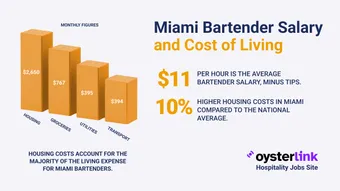

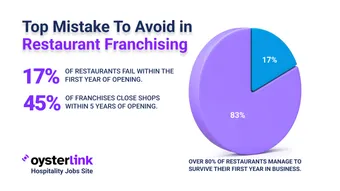


Loading comments...